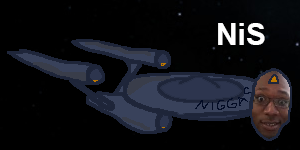

User Controls
Posts by Enigma
-
2024-06-19 at 12:31 AM UTC in New watch.TimeX watch has indiglo feature (it glows when u push a button) so I can see it at night
-
2024-06-19 at 12:29 AM UTC in New watch.I called it Amazon basics but it's Amazon essentials, same shit though
-
2024-06-19 at 12:29 AM UTC in New watch.
Originally posted by Cowboy2013 Something else if you have any kind of compass as a fashion accessory I'm betting you also own a "tactical pen".
that actually has some utility but I don't want a compass watch.
Back on topic they came today.
the TimeX watch arrived with a broken stand/smashed box but was in perfect condition. The Amazon basics watch came in a very nice little box. So I tried them both on and tried to figure out which one I liked.




Ultimately I went with the Timex with rubber strap, I am going to give my old roommate the Amazon basics watch. He's old he'll love it. Plus it comes in the nice box. I'mam tell him it's for father's day, he'll love that shit and probably tear up. Anyway here's the photo dump of the timeX watch, the Amazon basic watch (whiter face) for comparison, the boxes, and uh oh my old watch (right) and the new TImeX watch (left) -
2024-06-18 at 11:18 PM UTC in 3rd Annual NiS Chatroom, Videocall. Saturday 10pm Eastern, June 22nd 2024.ok
-
2024-06-18 at 7:01 PM UTC in Justin Timberlake arrestedFolks he was driving under the influence
-
2024-06-18 at 7 PM UTC in Tunattack! HELP!!! INJURED!!!OP is like the Gordon Ramsey of this community but with a bigger dick and no cycling injury.
-
2024-06-18 at 6:59 PM UTC in Tunattack! HELP!!! INJURED!!!
Originally posted by Cowboy2013 If anybody remembers the stuff I made with tuna I think it looked a lot better but I hate slaw and mayonnaise.
It was tuna cooked in bacon grease, I think with some garlic powder and I put it on some rice with Louisiana hot sauce. We're probably getting a lot of radpoints from Fukushima but I will sometimes get a few cans out of my covid stash if I don't feel like going anywhere.
It tastes like rice and hash though.
Sounds like what you'd make on your first day out of jail at your relatives house -
2024-06-18 at 6:58 PM UTC in Tunattack! HELP!!! INJURED!!!salt is bad for u, I hope i'll be alright, I sprinkled a lil on it in the original post.
-
2024-06-18 at 6:58 PM UTC in Tunattack! HELP!!! INJURED!!!
Originally posted by Donald Trump Tuna, mayonnaise and rice is great imo. Especially with brown rice. Tuna, mayonnaise and pasta is also delicious.
It's all super fattening though.
ya I can eat a cup of white rice, 1 can of tuna, a handful of spinach and some vegetables bro with 2 packets of mayo, I'll be aight -
2024-06-18 at 6:57 PM UTC in What are you doing at the momentI think I might try to convince the professor i'm retarded by telling her how much I like the number 2
-
2024-06-18 at 6:56 PM UTC in What are you doing at the momentI was hoping there would be a book we have to read, a paper we have to write, and maybe some essays but it looks like its mostly quizzes, tests, and 1 speech at the end via zoom ROFL
online education is a joke but this isn't degree specific so I don't have to learn anything. I only need a 60% but I"LL probably get a 100% since I already speak English as I mentioned and I've always liked the number 2. -
2024-06-18 at 6:55 PM UTC in What are you doing at the momentFirst Day of English 2 class. 3 1/2 hours via zoom twice a week for six weeks. I speak English and I know the number 2 so I'm thinking this shit is gonna be easy. I'm hoping it's such an easy class I can shit post/play Tetris during it and then just dot he assignments but it is mandatory with the web cam on
-
2024-06-18 at 6:52 PM UTC in Tunattack! HELP!!! INJURED!!!I didn't think anyone would notice in the OP.
-
2024-06-18 at 6:52 PM UTC in Tunattack! HELP!!! INJURED!!!
Originally posted by General Butt.Naked Tuna salad doesnt go with rice. Fona definitely takes the tops spot, but youre certainly in the running for making everything look kind of gross. Are those pinto beans in the tuna salad?
... ya I did add a scoop of baked beans to the side, I didn't include that cuz that's well... it's not gross if you're there and you really got a hankering for a scoop of baked beans on the side of your tuna slop salad. -
2024-06-18 at 6:49 PM UTC in Wariat has quit the forum due to horse hat / polish spamHe sent me 4 perverse messages today. I did open and read them. I responded to one of them which is probably why I got so many.
-
2024-06-18 at 6:42 PM UTC in New watch.I kinda like looking up the worst of something
IDK why always have
"Worst shoes"
"Worst meals."
"Worst watches."
Imagine you hire a jedieler and you're like hey bro u and this watch maker are gonna team up with this random black guy I hired and design the most blinge dout watch
and they're like ya okay here, 1200$
-
2024-06-18 at 6:40 PM UTC in New watch.
-
2024-06-18 at 6:06 PM UTC in New watch.
-
2024-06-18 at 6 PM UTC in Finding the scary black man, an NiS mystery.I agree
-
2024-06-18 at 5:56 PM UTC in Tunattack! HELP!!! INJURED!!!ya I like eating white rice as a base for proteins and vegetables

